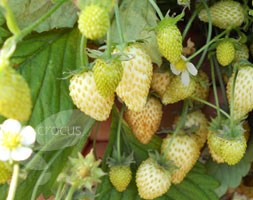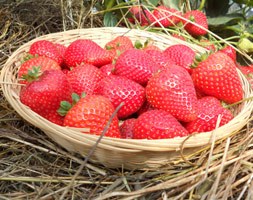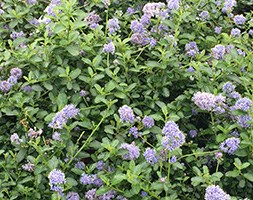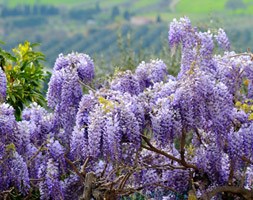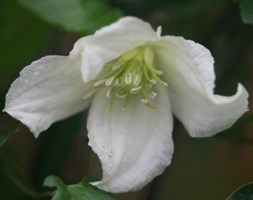Price reductions at Crocus
by Sarah - December 14th, 2013.Filed under: Crocus, Price Reductions.
Crocus reduced the price on these products today
strawberry ‘Scarlet Beauty’ (alpine strawberry) was £9.99 now £7.49
Position: full sun or lightly dappled shade Soil: any soil Rate of growth: fast-growing Other features: ready to pick from June Hardiness: fully hardy The fruit of this alpine strawberry may be smaller than those grown commercially, but what it lacks in size it makes up for in flavour. We have love it because not only does it make pretty groundcover at the front of the border, but it will also produce a bumper crop of deliciously sweet berries from early summer onwards. Where space is limited it will happily grow in pots or hanging baskets. Garden care: These strawberry runners are sent out as bare root (ie not potted up or in soil) plants. They are completely dormant, so any remaining foliage or stems will look shrivelled and dry. They should be planted out within a couple of days of arrival. Once they are planted out, they will emerge from their dormancy and start to put on new growth in spring (or within a 4 – 6 weeks if planted in spring). Choose a spot in full sun and prepare the bed well by removing all the weeds and digging in a generous amount of compost. You can also work in some general purpose fertiliser if planting in spring. When you are ready to plant, fill a bucket with tepid water and leave the plants to soak for 20 minutes. This will rehydrate the roots. While they are soaking, prepare the planting holes – these should be approximately twice as wide as the strawberries root system. Plant the strawberries so the crown (the point where the roots meet the stem) is at soil level, and spread the roots out before re-filling with soil. Space them at 45cm intervals, allowing 75cm between each row. After planting, immediately give them a thorough water and apply a generous layer of mulch around the base of the plants, being careful to avoid the crown. Keep the plants well watered, especially during warmer weather and when the fruits are developing. When the strawberries are starting to form, a thick layer of straw or a strawberry mulch mat can be placed under the plants to stop the fruit touching the soil. Sheets of black plastic mulch can also be used, and this will also help retain soil moisture, reduce weeds and encourage early cropping. Strawberries can also be planted in tubs, containers and hanging baskets.
strawberry ‘Leo Alba’ (alpine strawberry) was £9.99 now £7.49
Position: full sun to light shade Soil: any soil Rate of growth: fast-growing Other features: ready to pick June / July Hardiness: fully hardy The unusual fruits of this alpine strawberry never ripen to red, but you will know they are ripe and ready to pick when they feel soft to the touch. Their flavour is unexpectedly refreshing too, sweet and delicate, with undertones of vanilla and pineapple. Smaller than the commercially grown strawberries, these have the advantage though of being able to crop over a much longer period in ideal conditions. Garden care: These strawberry runners are sent out as bare root (ie not potted up or in soil) plants. They are completely dormant, so any remaining foliage or stems will look shrivelled and dry. They should be planted out within a couple of days of arrival. Once they are planted out, they will emerge from their dormancy and start to put on new growth in spring (or within a 4 – 6 weeks if planted in spring). Choose a spot in full sun and prepare the bed well by removing all the weeds and digging in a generous amount of compost. You can also work in some general purpose fertiliser if planting in spring. When you are ready to plant, fill a bucket with tepid water and leave the plants to soak for 20 minutes. This will rehydrate the roots. While they are soaking, prepare the planting holes – these should be approximately twice as wide as the strawberries root system. Plant the strawberries so the crown (the point where the roots meet the stem) is at soil level, and spread the roots out before re-filling with soil. Space them at 45cm intervals, allowing 75cm between each row. After planting, immediately give them a thorough water and apply a generous layer of mulch around the base of the plants, being careful to avoid the crown. Keep the plants well watered, especially during warmer weather and when the fruits are developing. When the strawberries are starting to form, a thick layer of straw or a strawberry mulch mat can be placed under the plants to stop the fruit touching the soil. Sheets of black plastic mulch can also be used, and this will also help retain soil moisture, reduce weeds and encourage early cropping. Strawberries can also be planted in tubs, containers and hanging baskets.
strawberry ‘Buddy’ (strawberry) was £8.99 now £7.49
Position: full sun Soil: any soil Rate of growth: fast-growing Hardiness: fully hardy Just released onto the market, ‘Buddy’ is an everbearing strawberry that is being hailed as a breakthrough in breading. This is because all the everbearing strawberries to date have produced a big crop of long-lasting fruits, but often at the expense of the flavour. ‘Buddy’ has all the benefits associated with the everbearers, but it also has a delicious flavour. It has also shown a good resistance to most common soil borne diseases and although trials are still ongoing, its resistance to powdery mildew is also very promising. Garden care: These strawberry runners are sent out as bare root (ie not potted up or in soil) plants. They are completely dormant, so any remaining foliage or stems will look shrivelled and dry. They should be planted out within a couple of days of arrival. Once they are planted out, they will emerge from their dormancy and start to put on new growth in spring (or within a 4 – 6 weeks if planted in spring). Choose a spot in full sun and prepare the bed well by removing all the weeds and digging in a generous amount of compost. You can also work in some general purpose fertiliser if planting in spring. When you are ready to plant, fill a bucket with tepid water and leave the plants to soak for 20 minutes. This will rehydrate the roots. While they are soaking, prepare the planting holes – these should be approximately twice as wide as the strawberries root system. Plant the strawberries so the crown (the point where the roots meet the stem) is at soil level, and spread the roots out before re-filling with soil. Space them at 45cm intervals, allowing 75cm between each row. After planting, immediately give them a thorough water and apply a generous layer of mulch around the base of the plants, being careful to avoid the crown. Keep the plants well watered, especially during warmer weather and when the fruits are developing. When the strawberries are starting to form, a thick layer of straw or a strawberry mulch mat can be placed under the plants to stop the fruit touching the soil. Sheets of black plastic mulch can also be used, and this will also help retain soil moisture, reduce weeds and encourage early cropping. Strawberries can also be planted in tubs, containers and hanging baskets.
Parthenocissus quinquefolia (virginia creeper) was £9.99 now £7.99
Position: full sun or shade Soil: fertile, well-drained soil Rate of growth: fast-growing Flowering period: June to August Hardiness: fully hardy Justifiably popular thanks to its unrivalled autumn colour, this vigorous creeper none the less needs to be handled with care. Its five-pointed, deeply divided, mid-green leaves turn brilliant shades of crimson-red in autumn and there are occasionally dark purple berries to add to the mix. It’s a showstopping plant that will quickly romp across a large wall but it needs lots of space, regular pruning and will smother other plants it finds in its way. All of this make it an unsuitable choice for small gardens or for laissez-faire gardeners. Garden care: Provide some support until the plant is well established. (This may take up to two years). Once established, tie in stray shoots and prune in autumn or early winter to keep the plant within bounds, paying particular attention to stems that are encroaching on windows, guttering or roofs.
Ceanothus thyrsiflorus var. repens (creeping blueblossom) was £9.99 now £7.99
Position: full sun Soil: fertile, well-drained soil Rate of growth: average Flowering period: May to June Hardiness: frost hardy (needs winter protection in cold areas) In May and June, this low-growing, evergreen shrub is smothered in fluffy, powder-blue flowers. It is easy to grow and care for, and forms a natural mound, so looks best towards the front of a mixed border with a backdrop of larger shrubs. Garden care: Each year after the plant has flowered, take out any dead, diseased or damaged shoots. Apply a 5-7cm mulch of well-rotted organic matter around the base of the plant in autumn.
Leucothoe Scarletta (‘Zeblid’) (switch ivy) was £12.99 now £9.99
Position: partial shade Soil: moist, acidic soil Rate of growth: average Flowering period: spring Hardiness: fully hardy Long, slim, glossy leaves emerge dark maroon, turning greener as they mature and then taking on lovely bronze and wine tints in the autumn. Although it prefers partial shade, the leaves of this spreading, evergreen shrub look almost metallic in sun. It forms an attractive dome of dense foliage and if kept low, makes ideal groundcover in acid soil. In a pot, it needs to be planted in ericaceous compost. Garden care: Minimal pruning is required. Remove misplaced, dead or diseased branches in late spring.
Wisteria sinensis (Chinese wisteria) was £12.49 now £9.99
Position: full sun or light, dappled shade Soil: fertile, moist, well-drained soil Rate of growth: fast-growing Flowering period: May to June Flower colour: bluish-lilac Other features: velvety, green seed-pods in hot summers; all parts of the plant are harmful if ingested Hardiness: fully hardy Pendant clusters of fragrant, pea-like, bluish-lilac flowers in May and June, often followed by velvety-green seed-pods. This vigorous Chinese wisteria looks fabulous trained over a sunny wall or strong pergola. Renowned for its superior fragrance and flower-colour, the twining stems need careful pruning. All the Wisterias we sell are grafted, so will start to flower at a younger age than those grown from cuttings. Garden care: To get lots of flowers, the twining stems need pruning twice a year – once in summer (about two months after the flowering has finished) and again in mid-winter. To train your Wisteria against a wall, the wall will first need a network of stout horizontal wires, attached at approximately 30cm intervals. After planting, prune the leading shoot of your Wisteria back to approximately 90cm above ground level and remove any side branches as this will encourage a strong new leader to form. In the summer of the first growing season, tie the leader in vertically and choose two new lateral shoots on either side of the leader. Tie these onto the wires at a 45 degree angle. Any smaller shoots coming from these lateral branches should be cut back to two or three buds. In the first winter, cut back the leader to a bud approximately 75cm above the highest lateral branch. Gently untie the lateral branches and prune them back by about a third, then re-tie them onto a wire so they are nearly horizontal. In subsequent summers (and until the plant has filled the allotted space), tie in the leader as it grows and choose two strong laterals to form the next tier. These should then be tied in at a 45 degree angle and as in the previous year, any smaller shoots coming from these should be cut back to two or three buds. In subsequent winters cut back the leading shoot as before and cut back and re-tie the new laterals to a near-horizontal position. The older laterals can be cut back by about a third of their total length. Once the plant has become established and reached the desired height, keep tying in the lateral stems as they spread out. In summer, cut back the wispy stems on both the laterals and sub-laterals (the
Clematis cirrhosa ‘Jingle Bells’ (clematis (group 1)) was £14.99 now £12.99
Position: full sun or partial shade Soil: fertile, well-drained, neutral soil Rate of growth: average to fast-growing Flowering period: December to February Flower colour: creamy-white Other features: leaves retained throughout the year Hardiness: frost hardy (needs winter protection) Large, nodding, cream-coloured flowers appear from winter to early spring and are followed by attractive seedheads. This charming climber is ideal for training around a doorway in a sunny, sheltered location where the scented blooms can best be appreciated. Garden care: No routine pruning is necessary. If the spread of the plant needs to be restricted prune immediately after flowering, cutting back overlong shoots to healthy buds. Apply a slow-release balanced fertiliser and a mulch of well-rotted garden compost around the base of the plant in early spring.
Salix caprea ‘Kilmarnock’ (Kilmarnock willow) was £14.99 now £12.99
Position: full sun Soil: any deep, moist but well-drained soil Rate of growth: average Flowering period: April to May Flower colour: golden male catkins Other features: umbrella-shaped, deciduous tree Hardiness: fully hardy A dwarf, weeping tree with dark green leaves with grey-green undersides. In mid- to late spring, the bare branches are covered in golden male catkins, which superb in cut-flower arrangements. An ideal tree for the small garden or even planted in a pot on the patio. Garden care: Requires minimal pruning. Remove any broken, diseased or crossing branches in late autumn or winter. When planting incorporate lots of well-rotted garden compost in the planting.








